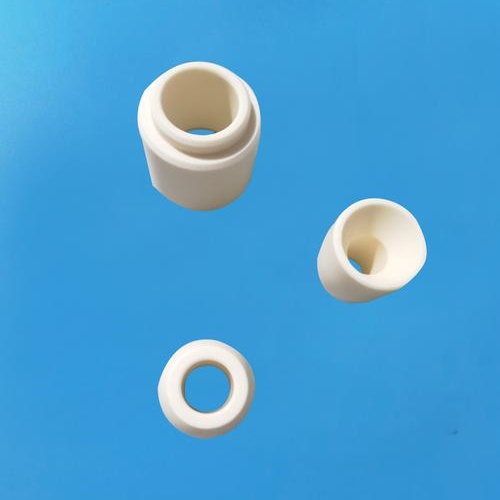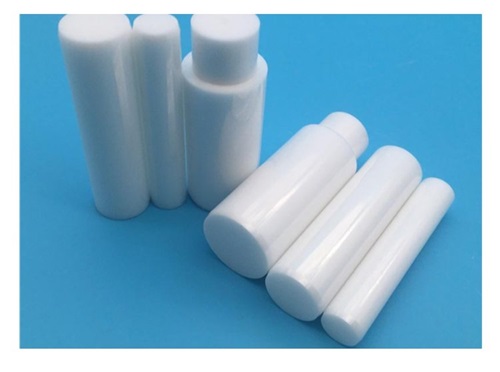What are the applications of aluminum nitride ceramics in high-frequency circuits
With the rapid development of electronic technology, high-frequency circuits are becoming increasingly widely used in fields such as communication, aerospace, and automotive electronics. High frequency circuits place extremely high demands on the thermal conductivity, electrical insulation, thermal expansion coefficient, and other properties of materials. Aluminum nitride ceramic (AlN), as a high-performance ceramic material, has become an ideal material choice in high-frequency circuits due to its unique physical and chemical properties.

- High frequency circuit substrate
Aluminum nitride ceramic substrate is one of the most important applications in high-frequency circuits. Its high thermal conductivity (170-300 W/(m · K)) can quickly dissipate the heat generated by high-power electronic devices, avoiding performance degradation or failure caused by overheating. In addition, the thermal expansion coefficient of aluminum nitride ceramics is similar to that of semiconductor materials such as silicon, which can reduce the stress caused by mismatched thermal expansion coefficients and improve the reliability and stability of equipment. In the RF amplifier module and millimeter wave antenna of 5G communication base stations, aluminum nitride ceramic substrates can meet the requirements of high-speed signal transmission and efficient heat dissipation. - High frequency filter
High frequency filters are key components in wireless communication systems, and their performance directly affects the quality and stability of the communication system. The high thermal conductivity and good electrical insulation performance of aluminum nitride ceramics can significantly improve the heat dissipation performance and stability of filters. Under high-frequency working conditions, aluminum nitride ceramics can effectively reduce signal loss and interference, improve signal integrity and transmission efficiency. - High frequency power amplifier
High frequency power amplifier is a core component in wireless communication systems, and its performance directly affects the transmission distance and stability of the communication system. The high thermal conductivity and good electrical insulation performance of aluminum nitride ceramics can effectively dissipate the heat generated by the amplifier, prevent overheating of the amplifier, and thus improve the stability and transmission distance of the amplifier. In high-power applications, aluminum nitride ceramic substrates can significantly reduce module operating temperature, improve energy efficiency and lifespan. - Radar system
Aluminum nitride ceramic substrates provide stable and efficient signal transmission performance in high-frequency circuits of military and civilian radars. Its low dielectric constant (about 8.6) and low dielectric loss (<0.001) can reduce signal delay and distortion, ensuring high-performance operation of the radar system. - Aerospace field
The application of aluminum nitride ceramic substrates in the aerospace field is mainly focused on engine control systems and spacecraft electronic equipment. Its excellent high-temperature stability and heat resistance enable it to work stably in extreme environments, avoiding material cracking caused by thermal stress. In addition, the lightweight design of aluminum nitride ceramics also meets the material weight requirements in the aerospace industry. - Automotive Electronics
Aluminum nitride ceramic substrates are widely used in the packaging of power semiconductor modules and IGBT modules in electric and hybrid vehicles to improve the heat dissipation performance and reliability of the equipment. Its high thermal conductivity and low thermal expansion coefficient ensure stable operation under high temperature and high power conditions. - Other applications
Aluminum nitride ceramics are also widely used in semiconductor lasers, medical equipment (such as CT machine X-ray tubes, high-frequency surgical knife circuits), semiconductor testing (such as probe cards, wafer testing carriers), and other fields. Its high frequency adaptability and excellent mechanical properties make it show great potential for applications in these fields.

Aluminum nitride ceramics have become an ideal material in high-frequency circuits due to their high thermal conductivity, low thermal expansion coefficient, excellent electrical insulation performance, and good mechanical properties. Its wide application in high-frequency circuit substrates, high-frequency filters, high-frequency power amplifiers, radar systems, aerospace, automotive electronics and other fields fully demonstrates its excellent performance and broad application prospects.
PREVIOUS:What are the characteristics and advantages of aluminum nitride ceramics
NEXT:What are the thermal conductivity and heat dissipation properties of aluminum nitride ceramics
CATEGORIES
LATEST NEWS
- What is Macor processable g...
- The material properties and...
- The reason for the high pri...
- What are the preparation me...
- Why modify aluminum nitride...
- Thermal conductivity values...
- What is the thermal expansi...
- Thermal shock resistance of...
- The average coefficient of ...
- What is high alumina ceramic
